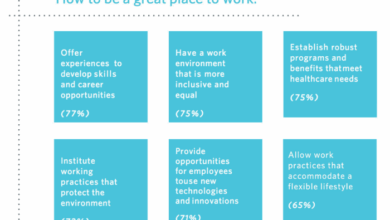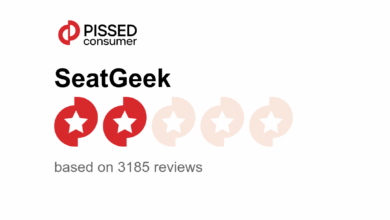
Employee appreciation day ideas are crucial for fostering a positive and productive work environment. This guide explores strategies for recognizing and rewarding employees, from tailored recognition programs to engaging activities for both remote and in-office teams. We’ll delve into the planning process, communication, and the importance of creating a culture of ongoing appreciation beyond a single day.
From brainstorming creative activities to ensuring inclusive experiences, this comprehensive guide covers all aspects of a successful employee appreciation day. It will provide practical steps for planning, executing, and sustaining appreciation throughout the year, focusing on both individual and team recognition.
Employee Recognition Strategies

Recognizing and appreciating employees is crucial for fostering a positive work environment and boosting morale. A well-structured employee recognition program not only acknowledges achievements but also motivates continued excellence and strengthens team spirit. This focus on appreciation is vital for attracting and retaining top talent in today’s competitive job market.Effective employee recognition programs go beyond simply thanking employees; they create a culture of value and appreciation where everyone feels seen and appreciated for their contributions.
This leads to higher job satisfaction, improved productivity, and ultimately, a more successful organization.
Employee Recognition Programs for Various Achievements
Different achievements warrant different forms of recognition. A comprehensive program should cater to a variety of accomplishments, from exceeding sales targets to demonstrating exceptional teamwork or problem-solving skills. This approach ensures that every employee feels valued, regardless of their role or area of expertise.
- Exceptional Performance Awards: These awards can be given for exceeding performance targets, consistently achieving high quality, or demonstrating significant innovation. They should be tied to specific, measurable criteria, allowing employees to understand what constitutes exceptional performance.
- Team Achievement Awards: Recognizing teams for collaborative efforts, project success, or outstanding teamwork builds camaraderie and strengthens the sense of shared purpose. This is particularly beneficial in fostering a collaborative work environment.
- Problem-Solving and Innovation Awards: Encouraging employees to think outside the box and offer innovative solutions is critical. Awards for identifying and solving problems effectively or proposing groundbreaking solutions can motivate creativity and encourage problem-solving.
Tailoring Recognition Programs to Different Demographics
Understanding and catering to the needs and preferences of different employee demographics is essential for effective recognition programs. This approach enhances inclusivity and ensures that all employees feel appreciated and valued.
- Remote Employees: Remote workers may appreciate digital recognition, such as public shout-outs on company platforms or virtual team celebrations. Personalized messages and virtual gift cards can also be effective.
- Young Professionals: This demographic often values opportunities for professional development and advancement. Mentorship programs, leadership training, and opportunities to present at conferences or industry events can be powerful recognition tools.
- Senior Employees: Senior employees often value recognition for their experience and institutional knowledge. Opportunities to share their expertise, leadership roles, and recognition for longevity are crucial elements of appreciation.
Non-Monetary Rewards for Employee Appreciation
Non-monetary rewards can be just as impactful as monetary ones, often creating a more lasting and meaningful impact on employee morale.
- Public Acknowledgement: A simple “thank you” in a company meeting, a shout-out on social media, or a written commendation can significantly boost employee morale.
- Extra Time Off: Giving employees extra time off, such as a half-day or a day off, can be a powerful motivator, especially for those who have gone above and beyond.
- Professional Development Opportunities: Investing in employee growth through training, workshops, or conferences demonstrates a commitment to their career development and shows appreciation for their contributions.
- Special Recognition Events: Company-sponsored events, such as a team lunch or a company picnic, create a sense of community and appreciation.
Comparison of Monetary vs. Non-Monetary Rewards
| Factor | Monetary Rewards | Non-Monetary Rewards |
|---|---|---|
| Impact | Tangible, immediate impact, but may not always be lasting. | Often more meaningful and lasting, creating a sense of value and recognition. |
| Cost | Potentially higher costs. | Often lower cost or free, offering significant value. |
| Flexibility | Can be less flexible in terms of tailoring to individual preferences. | Can be tailored more effectively to individual preferences and needs. |
| Employee Perception | Can sometimes be perceived as transactional. | Often perceived as more genuine and heartfelt. |
Employee Contributions Deserving Recognition
A comprehensive recognition program should acknowledge a wide range of employee contributions.
- Exceeding Performance Goals: Recognizing employees who consistently surpass expectations.
- Exceptional Customer Service: Appreciating employees who consistently provide exceptional service.
- Team Collaboration: Highlighting teams who work effectively together to achieve shared goals.
- Mentorship and Guidance: Recognizing employees who mentor and guide others.
- Problem-Solving and Innovation: Appreciating employees who come up with creative solutions.
- Initiative and Proactiveness: Recognizing employees who take initiative and are proactive.
- Longevity and Dedication: Celebrating employees who have been with the company for a significant period.
Creative Appreciation Activities
Employee appreciation days are more than just a day off; they’re opportunities to foster a stronger, more engaged workforce. By implementing thoughtful and creative activities, companies can cultivate a culture of gratitude and recognition, leading to increased employee morale and productivity. This approach fosters a sense of value and belonging, which is crucial for employee retention.A successful employee appreciation day hinges on a multifaceted approach that considers the diverse needs and preferences of the workforce.
This includes recognizing individual achievements, celebrating team successes, and creating an inclusive atmosphere for all employees. Tailoring activities to different company cultures and incorporating employee feedback are essential components for maximizing the impact of these events. This tailored approach ensures that appreciation events resonate deeply with employees, creating a lasting positive impact on their experience.
Unique and Memorable Activities, Employee appreciation day ideas
A range of activities can be used to make appreciation days truly memorable. These activities should be carefully chosen to reflect the company’s values and culture, and should also cater to diverse interests and preferences among employees. For instance, a company that values innovation might host a “hackathon” to encourage creativity, while a company with a focus on collaboration might arrange a team-building exercise.
Thinking about employee appreciation day ideas? Sometimes a simple gesture goes a long way. And with the new XOOMs, pretty much the same as the old XOOMs but at a more attractive price, you might find some extra budget for some fun appreciation day activities. Maybe a catered lunch, a team-building activity, or even just some small tokens of appreciation.
Regardless of your approach, a little appreciation can go a long way.
The key is to create experiences that employees will cherish and remember long after the day has ended.
Remote and In-Office Activities
Tailoring appreciation activities to accommodate both remote and in-office employees is crucial for inclusive engagement. For remote teams, virtual events such as online games, virtual escape rooms, or collaborative art projects can foster a sense of community. In-office employees can benefit from team lunches, volunteer opportunities, or workshops focused on skill development. This ensures all employees feel valued, regardless of their work location.
Inclusive and Engaging Experience
Creating an inclusive and engaging experience for all employees is paramount. This involves understanding and respecting the diversity within the workforce, taking into account cultural sensitivities, and ensuring that activities appeal to a broad range of interests. For example, offering a variety of activities, such as cooking demonstrations, language exchange sessions, or cultural performances, can cater to different preferences and backgrounds.
A thoughtful approach to inclusivity ensures that all employees feel appreciated and respected.
Incorporating Employee Feedback
Incorporating employee feedback into the design of appreciation events is crucial for ensuring that activities resonate with employees. Companies can gather feedback through surveys, polls, or focus groups. This input can help tailor activities to specific interests and preferences, leading to a more engaging and memorable experience for all. For instance, if employees express interest in learning new skills, the appreciation day could include workshops or training sessions.
Activities Aligned with Company Cultures
Activities should reflect the company culture. For example, a company known for its innovative spirit might host a “pitch competition” where employees can present their ideas. A company emphasizing teamwork might arrange a volunteer day where employees work together on a community project. These activities will be more meaningful when they directly connect to the company’s core values.
Individual and Team Recognition
Employee appreciation events should recognize both individual and team achievements. Individual recognition can be achieved through personalized gifts, certificates of appreciation, or public acknowledgements. Team recognition can take the form of team-building activities, team lunches, or special events. A balanced approach that acknowledges both individual and team contributions fosters a strong sense of camaraderie and shared success.
Planning and Logistics
Planning a successful employee appreciation day requires careful consideration of various factors. It’s more than just a party; it’s a strategic investment in employee morale and retention. A well-organized event fosters a positive work environment and strengthens team bonds. The key lies in meticulous planning, effective communication, and a clear understanding of resources.Effective planning and logistics are crucial for creating a memorable and impactful employee appreciation day.
By meticulously organizing tasks, allocating resources, and managing communications, you can ensure a smooth execution of the event, maximizing its impact on employees.
Setting a Budget and Allocating Resources
A well-defined budget is essential for controlling costs and ensuring the event’s success within the allocated resources. Careful cost analysis allows for informed decisions regarding venue selection, catering options, and entertainment choices. This helps avoid overspending and allows for adjustments as needed. Prioritize expenses based on the event’s goals and the needs of the employees.
Key Personnel and Responsibilities
Identifying key personnel and assigning clear responsibilities is vital for smooth operation. This ensures that different aspects of the event are handled efficiently and effectively. A dedicated team with specific roles will allow for clear accountability and prevent overlapping duties. Appointing a project manager to oversee the entire process is highly recommended.
Event Logistics and Communication
Effective communication is key for ensuring everyone is informed and on the same page. Clear communication channels should be established to keep all stakeholders updated on the event’s progress. This involves using multiple communication methods, such as emails, internal memos, and announcements on company platforms.
Creating a Schedule for the Employee Appreciation Day
A detailed schedule helps manage the event’s timeline and ensures activities run smoothly. A comprehensive schedule includes start and end times for each activity, venue setup, and break periods. This ensures that all activities are executed in a timely manner and that the overall event flows seamlessly.
Planning Timeline and Task Allocation
A well-structured schedule for the planning stages will ensure a smooth execution of the appreciation day. This helps in managing time efficiently and ensuring all tasks are completed within the designated deadlines. By creating a detailed schedule, you can track progress, identify potential delays, and make adjustments as needed.
| Stage | Tasks | Responsibilities | Deadlines |
|---|---|---|---|
| Phase 1: Planning | Budgeting, Venue Selection, Catering, Entertainment, Invitations, Decorations | Event Planning Team, Finance Team, HR | 2-4 weeks prior |
| Phase 2: Logistics | Venue Setup, Staff Scheduling, Equipment Procurement, Set up activities | Event Logistics Team, Venue Staff | 1 week prior |
| Phase 3: Execution | Event Coordination, Staff Management, Guest Check-in, Monitoring | Event Coordinator, Event Staff | Event Day |
| Phase 4: Evaluation | Feedback Collection, Data Analysis, Post-Event Report | HR, Event Planning Team | Post-Event |
Communication and Engagement

Cultivating a sense of shared appreciation requires proactive communication and thoughtful engagement. A well-executed appreciation day isn’t just about the gifts or activities; it’s about fostering a culture of recognition and gratitude within the entire team. Open communication channels and inclusive planning processes are crucial for ensuring everyone feels valued and excited about the celebration.Effective communication builds anticipation and excitement for the appreciation day, turning it into a truly memorable experience for all employees.
This involves not only announcing the event but also sharing the rationale behind it, the specific recognitions being highlighted, and the overall spirit of the celebration.
Significance of Effective Communication
Clear and consistent communication is paramount for ensuring a successful appreciation day. Employees need to understand the purpose, the criteria for recognition, and the overall value of the event. Transparent communication builds trust and encourages participation, leading to a more meaningful and impactful experience. This is crucial for fostering a positive and supportive work environment.
Methods for Communicating Recognition Announcements
Several channels can effectively communicate recognition announcements. A company-wide email is a standard method. Internal social media platforms, if utilized, can be valuable tools for sharing news and engaging in discussions. Team meetings can be dedicated to celebrating specific achievements. Displaying recognition boards or posters in common areas can serve as visual reminders and create a sense of community.
Thinking of fun employee appreciation day ideas? Sometimes a little tech inspiration can spark some great concepts. Microsoft’s recent tweaks to the Kinect, allowing for more sophisticated gesture recognition, could offer some cool ideas for interactive games or employee-led training sessions. Perhaps a themed “Kinect Challenge” could be a fun way to boost team spirit and recognize employees, much like a friendly competition with exciting prizes.
It’s a great way to keep things engaging and innovative for Employee Appreciation Day! microsoft tweaks kinect to add more gesture recognition
Consider a combination of these approaches to maximize reach and impact.
Engaging Employees in the Planning Process
Employee input and participation in the planning process are essential for ensuring the appreciation day aligns with the company’s values and resonates with employees. This can be achieved through surveys, suggestion boxes, or focus groups to gather feedback. Encouraging employees to nominate colleagues for recognition fosters a sense of ownership and encourages a culture of appreciation. Employee participation can be as simple as having an open forum where employees can share ideas for activities.
Ensuring All Employees Feel Valued and Appreciated
Creating a sense of inclusivity and celebrating a variety of achievements is critical for making all employees feel valued and appreciated. This might involve recognizing individual contributions, team accomplishments, and even company-wide milestones. Recognizing a range of achievements, from technical expertise to exceptional customer service, helps create a broader sense of appreciation. Consider offering diverse forms of recognition that resonate with different personalities and preferences.
Making the Appreciation Day Memorable
A memorable appreciation day transcends a simple event; it’s about creating a lasting impact on employee morale and engagement. The focus should be on celebrating accomplishments and creating positive memories. This could involve thoughtful gestures, personalized recognition, and opportunities for employees to connect with each other in a relaxed and celebratory atmosphere. Consider the specific needs and preferences of different employee groups when planning activities.
Sample Email Announcing Appreciation Day
Subject: Celebrating Our Amazing Team! Employee Appreciation Day is Coming!Dear Valued Employees,We’re thrilled to announce our annual Employee Appreciation Day, scheduled for [Date] from [Start Time] to [End Time] in [Location]. This special day is dedicated to recognizing and celebrating the incredible contributions each of you make to [Company Name].This year, we’re particularly proud to highlight [Employee Name] for their outstanding work on [Project/Initiative], and [Employee Name] for their commitment to [Specific accomplishment].
These are just a few examples of the many outstanding individuals and teams that make our company so successful.We’ve planned a fantastic day filled with [List a few key activities, e.g., team-building exercises, catered lunch, awards ceremony]. We encourage you to join us to celebrate your achievements and those of your colleagues.More details about the day’s activities will follow in the coming weeks.
We look forward to seeing you there!Sincerely,The [Company Name] Team
Sustaining Appreciation: Employee Appreciation Day Ideas
Turning a single employee appreciation day into a year-round culture of recognition requires a shift in mindset. It’s not just about acknowledging achievements; it’s about weaving appreciation into the fabric of daily interactions and operations. This transformation fosters a more positive and productive work environment, ultimately benefiting both employees and the organization.A culture of ongoing appreciation isn’t about lavish gestures all the time, but rather consistent, genuine acknowledgment of contributions, big and small.
Regular feedback loops and clear communication channels are essential for employees to feel valued and understood. This proactive approach goes beyond the occasional celebration, creating a workplace where everyone feels appreciated and motivated to excel.
Regular Recognition and Feedback
Regular feedback, both positive and constructive, is crucial for employee growth and engagement. Constructive criticism, delivered with empathy and focus on improvement, empowers employees to develop professionally. Regular check-ins, performance reviews, and one-on-one meetings provide opportunities to acknowledge accomplishments and address areas for development. This two-way communication fosters a sense of partnership and strengthens the employee-employer relationship.
Specific and timely feedback allows employees to understand their impact and how their contributions are valued.
Integrating Appreciation into Daily Operations
Integrating appreciation into daily operations is a key element in fostering a culture of continuous recognition. This means weaving appreciation into the very fabric of company procedures. Simple actions like thanking employees for their help, acknowledging their expertise in team meetings, or celebrating small wins can significantly impact morale. Regular team huddles or brief meetings, where successes are acknowledged, and challenges are addressed collectively, demonstrate a culture of mutual support.
Thinking about employee appreciation day ideas? It’s a great way to boost morale and show your team you care. Navigating the tricky waters of workplace culture, especially in today’s climate, requires careful consideration. For example, how do social media platforms handle the rising tensions around culture wars and censorship? A recent article explores this fascinating topic in depth, offering valuable insights for social media companies trying to balance free speech with community safety.
Check it out here: culture wars vs censorship whats a social network to do. Ultimately, creating a positive work environment where everyone feels valued is key, and a thoughtful employee appreciation day can be a powerful tool in that process.
Recognizing Contributions Beyond Appreciation Day
Recognizing contributions beyond the annual appreciation day necessitates a shift from one-off events to consistent practices. This can involve public acknowledgment during team meetings, recognizing employees’ achievements in company newsletters, or creating a “spotlight” section on the company intranet or social media channels. Highlighting specific projects, and achievements, fosters a culture of recognition, making employees feel more connected to their work and the organization’s success.
For example, a company might create a “Employee Spotlight” section on their internal website, featuring employees and their accomplishments throughout the year.
Demonstrating Appreciation Throughout the Year
Demonstrating appreciation throughout the year requires a multifaceted approach. It’s about creating a culture where recognition isn’t just a one-day event but an ongoing practice. This includes formal recognition programs, such as employee of the month awards or team-based accolades, and informal gestures, such as handwritten notes of appreciation or a “thank you” email. Offering opportunities for professional development, like training courses or conferences, demonstrates a commitment to employee growth and advancement, demonstrating an investment in their future and showing appreciation for their current contributions.
Implementing peer-to-peer recognition programs allows colleagues to directly appreciate one another’s efforts.
Small, Everyday Actions to Show Appreciation
Small, everyday actions can make a significant difference in fostering a culture of appreciation. These actions go beyond the grand gestures and focus on consistent, genuine acknowledgment of contributions.
- Verbal Acknowledgement: A simple “thank you” or “great job” can significantly impact an employee’s morale. Expressing gratitude verbally reinforces positive behaviors and fosters a positive work environment.
- Written Acknowledgement: A handwritten note, a quick email, or a message on an internal communication platform can make a lasting impression. These personalized messages show that their contributions are valued and appreciated beyond the immediate task.
- Small Gifts: A thoughtful gift, like a small treat or a gift certificate, can express gratitude for a specific accomplishment or for consistent hard work. These gestures demonstrate a personal touch.
- Public Recognition: Recognizing employees in team meetings, company newsletters, or social media platforms can acknowledge their contributions and motivate others.
- Flexible Work Options: Offering flexible work options can be a valuable way to appreciate employees’ work-life balance. This can demonstrate trust and appreciation for their time and efforts.
- Team Building Activities: Organizing team-building activities fosters camaraderie and strengthens bonds within the team, creating a sense of community and appreciation for shared efforts.
Examples and Illustrations
Bringing employee appreciation to life requires more than just words; it demands tangible actions and inspiring visuals. This section dives into practical examples, illustrating how to make your employee appreciation day truly memorable and impactful. Effective appreciation goes beyond a single day; it’s about cultivating a culture of recognition and gratitude throughout the year.This section provides practical examples of themes, activities, and communication strategies to inspire and engage employees, showcasing how to transform a simple appreciation day into a truly rewarding experience.
It also emphasizes the importance of visual elements in promoting the event and celebrating employee achievements.
Successful Employee Appreciation Day Themes
A well-chosen theme can significantly enhance the impact of your appreciation day. Themes should resonate with your company culture and values, making the day feel personalized and meaningful. Consider themes that celebrate specific accomplishments, employee strengths, or company milestones.
- “Celebrating Innovation”: Focuses on recognizing innovative ideas and solutions, fostering a culture of creativity and problem-solving.
- “Teamwork Triumphs”: Highlights the collaborative spirit and achievements of teams, emphasizing the importance of teamwork and synergy.
- “Growth & Development”: Celebrates employees’ professional growth and development, recognizing their dedication to learning and advancement.
- “Customer Focus Champions”: Recognizes employees who consistently go above and beyond to provide exceptional customer service, emphasizing the importance of customer satisfaction.
Inspiring Employee Appreciation Activities
The activities you choose should align with your company culture and the theme you’ve selected. Visual displays and interactive experiences can elevate the atmosphere and make the event more engaging. Consider offering a variety of activities to cater to different employee preferences.
- “Employee Spotlight”: A designated area showcasing employee accomplishments and contributions. Images of employee projects, client testimonials, and team successes can be displayed, providing a visual narrative of their impact.
- “Skill Swap”: A collaborative session where employees can share their skills and expertise with colleagues, promoting knowledge sharing and cross-functional learning.
- “Gratitude Wall”: A physical or digital space where employees can express their gratitude for colleagues, fostering a culture of appreciation and support.
Appreciation Day Activities by Employee Type
This table illustrates how activities can be tailored to meet the specific needs of remote and in-office employees.
| Employee Type | Activity Ideas |
|---|---|
| Remote | Online appreciation sessions, virtual team lunches, personalized video messages, online recognition platforms, remote team-building games, digital photo displays, remote employee spotlights |
| In-Office | Company-wide picnic, team lunches, interactive games, themed parties, employee-led workshops, awards ceremonies, volunteer events |
Visually Engaging Materials
Creating visually appealing materials is crucial for promoting your appreciation day and setting the tone for the event. Use vibrant colors, eye-catching graphics, and clear messaging to capture attention.
- Posters and Banners: Use visually engaging posters and banners featuring the event theme and key activities to create excitement.
- Social Media Campaigns: Use social media to build anticipation and encourage participation. Create engaging posts, share employee stories, and highlight upcoming events.
- Email Invitations: Design email invitations with visually appealing graphics and clear information about the appreciation day. Personalize the invitation to make it more impactful.
Team-Building Activities
Team-building activities can strengthen bonds and foster a sense of camaraderie among employees. These activities can be adapted for both in-office and remote settings.
- Escape Room Challenges: Test teamwork and problem-solving skills in a fun and engaging environment. The escape room experience can be adapted for remote teams via online platforms.
- Collaborative Projects: Assign a project that requires teamwork and collaboration, enabling employees to work together towards a shared goal. The project could focus on a specific company challenge or a creative theme.
- Volunteer Activities: Encourage employees to participate in volunteer activities together. This provides an opportunity to connect and support a cause while fostering a sense of community.
Showcasing Employee Work
Visually showcasing employee work can inspire and motivate others. Creating visually appealing displays can elevate the event and demonstrate the value of employee contributions.
- Interactive Exhibits: Design interactive exhibits that allow employees to explore their colleagues’ projects and accomplishments. These exhibits can be organized by department, project, or skill.
- Showcase Wall: Create a dedicated showcase wall to highlight projects, designs, or other work samples. This can be a rotating display to feature different employees or teams.
- Digital Gallery: A digital gallery on a company intranet or website can be a platform for showcasing employee work, accomplishments, and testimonials. This provides a wider reach and can be easily updated.
Epilogue
In conclusion, a successful employee appreciation day requires careful planning, effective communication, and a genuine commitment to recognizing employee contributions. By implementing the strategies Artikeld in this guide, companies can cultivate a positive work environment where employees feel valued and appreciated, ultimately boosting morale and productivity. Let’s celebrate our employees and create a workplace where everyone thrives.






